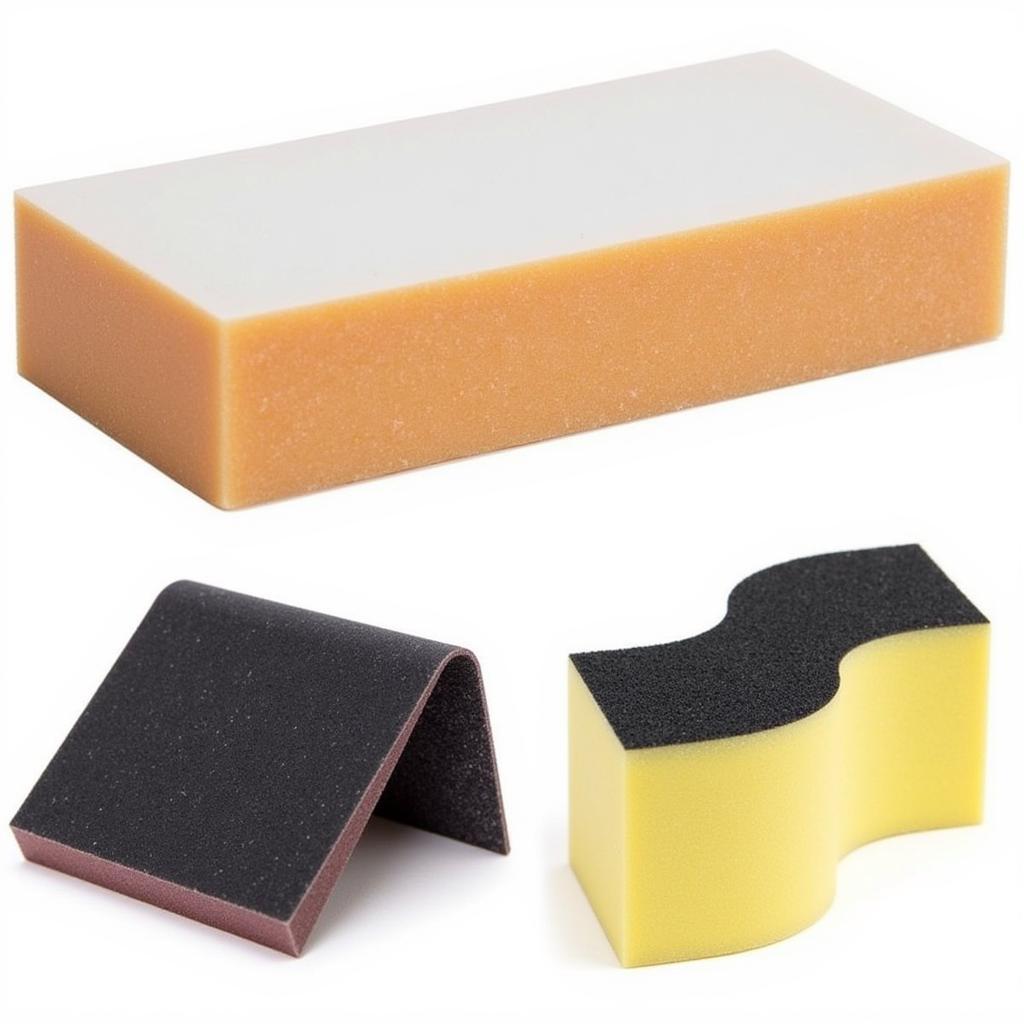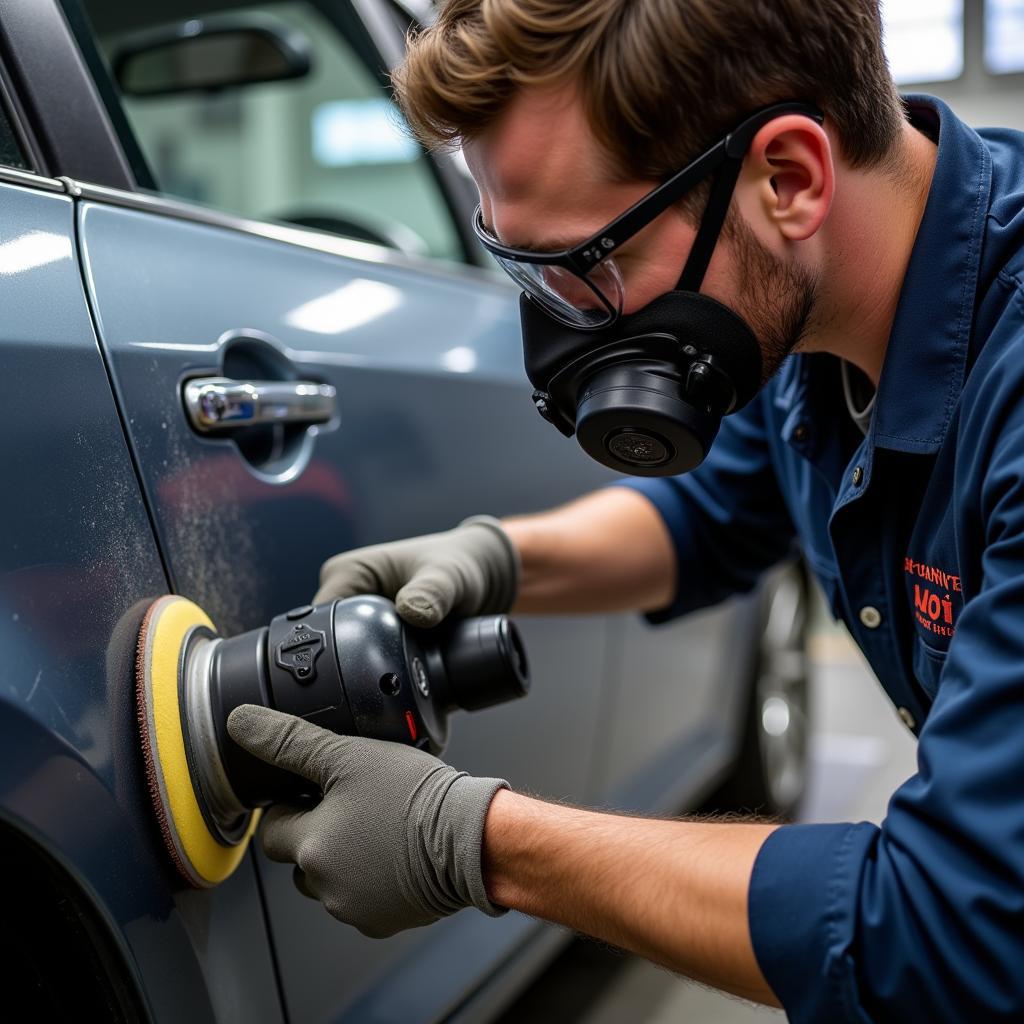Achieving a flawless car finish requires meticulous preparation, and Tools For Body Car Sanding play a crucial role. From removing imperfections to creating a smooth surface for paint adhesion, selecting the right sanding tools is paramount for both professionals and DIY enthusiasts. This article explores the essential tools needed for effective car body sanding, offering guidance on their usage and benefits.
Types of Sanding Tools for Car Bodywork
Car body sanding involves a range of tools, each designed for specific tasks and levels of detail. Understanding these differences is crucial for selecting the right tool for the job.
Sandpaper
Sandpaper is the cornerstone of body car sanding, available in various grits ranging from coarse to ultra-fine. Coarse grits are ideal for initial shaping and removing imperfections, while finer grits create a smooth, paint-ready surface. Choosing the correct grit sequence is vital for achieving optimal results. Remember, using the correct grit sequence is like climbing a ladder – you wouldn’t want to skip a step! car body sanding tools are crucial for effective car body sanding.
What grit sandpaper should I use for car body sanding?
The grit you choose depends on the stage of the sanding process. Start with a coarser grit (e.g., 80-180) for initial shaping and removing imperfections. Gradually move to finer grits (e.g., 220-400) for smoothing and preparing the surface for paint.
Sanding Blocks
Sanding blocks provide a flat, even surface for applying sandpaper, ensuring consistent pressure and preventing uneven sanding. They come in various shapes and sizes to accommodate different contours and panel shapes. Using a sanding block is essential, particularly on larger, flatter areas, for achieving a professional finish. Ever tried sanding a flat surface by hand? You’ll quickly understand why a sanding block is so important!
What are the different types of sanding blocks?
Sanding blocks come in various forms, including hard blocks, soft blocks, and contour blocks. Hard blocks provide a rigid surface for aggressive sanding, while soft blocks offer flexibility for curved surfaces. Contour blocks are specifically designed for sanding complex shapes.  Different Types of Sanding Blocks
Different Types of Sanding Blocks
Power Sanders
Power sanders significantly expedite the sanding process, particularly for larger areas. They come in various types, including orbital sanders, random orbital sanders, and belt sanders. Each type offers different advantages, with orbital sanders providing a more aggressive sanding action and random orbital sanders delivering a swirl-free finish. car bodywork sanding tools can help you achieve a professional finish quickly and efficiently.
Which power sander is best for car body work?
The best power sander for car bodywork depends on the specific task. Random orbital sanders are generally preferred for their swirl-free finish, while orbital sanders can be useful for more aggressive material removal. Belt sanders are typically reserved for heavy-duty sanding tasks.
Choosing the Right Tools for Body Car Sanding
Selecting the appropriate tools depends on the specific task, the extent of the damage, and the desired finish.
- For minor scratches and imperfections: A combination of sanding blocks and varying grits of sandpaper might suffice.
- For larger areas or more significant damage: Power sanders, coupled with the appropriate sanding discs, can save time and effort. car bodywork sanding tools uk can be found in various specialist stores and online retailers.
- For intricate contours and curves: Specialized sanding tools, such as contour blocks or flexible sanding pads, are recommended.
“Choosing the right tools is half the battle,” says John Smith, a seasoned auto body repair specialist with over 20 years of experience. “It’s like choosing the right brush for a painting – the right tool makes all the difference.”
Techniques and Tips for Effective Car Body Sanding
- Always start with a coarser grit and progressively move to finer grits. This ensures a smooth and even surface.
- Use a sanding block for even pressure and prevent dips or scratches. This is particularly important when working on flat panels.
- Keep the sanding surface lubricated with water or a specialized sanding lubricant. This prevents clogging and extends the life of the sandpaper. car body shop sanding tools are designed for professional use and offer superior performance.
- When using power sanders, let the tool do the work. Applying excessive pressure can damage the surface.
- Always wear appropriate safety gear, including a dust mask and eye protection. Sanding dust can be harmful to your health.
 Car Body Sanding Process
Car Body Sanding Process
Conclusion
Mastering the art of car body sanding requires the right tools and techniques. By understanding the different types of tools available and applying the correct techniques, you can achieve a professional-looking finish, whether you’re a seasoned professional or a DIY enthusiast. Investing in quality tools for body car sanding is an investment in the longevity and aesthetic appeal of your vehicle. sanding tools for painting a car are essential for preparing the surface before applying primer and paint.
“Remember, patience is key in car body sanding,” adds Maria Garcia, another expert in auto body repair. “Taking your time and using the right tools will ultimately yield the best results.”
Need assistance with your car diagnostic needs? Contact us via WhatsApp: +1(641)206-8880, Email: [email protected] or visit us at 910 Cedar Lane, Chicago, IL 60605, USA. Our customer service team is available 24/7.

Leave a Reply